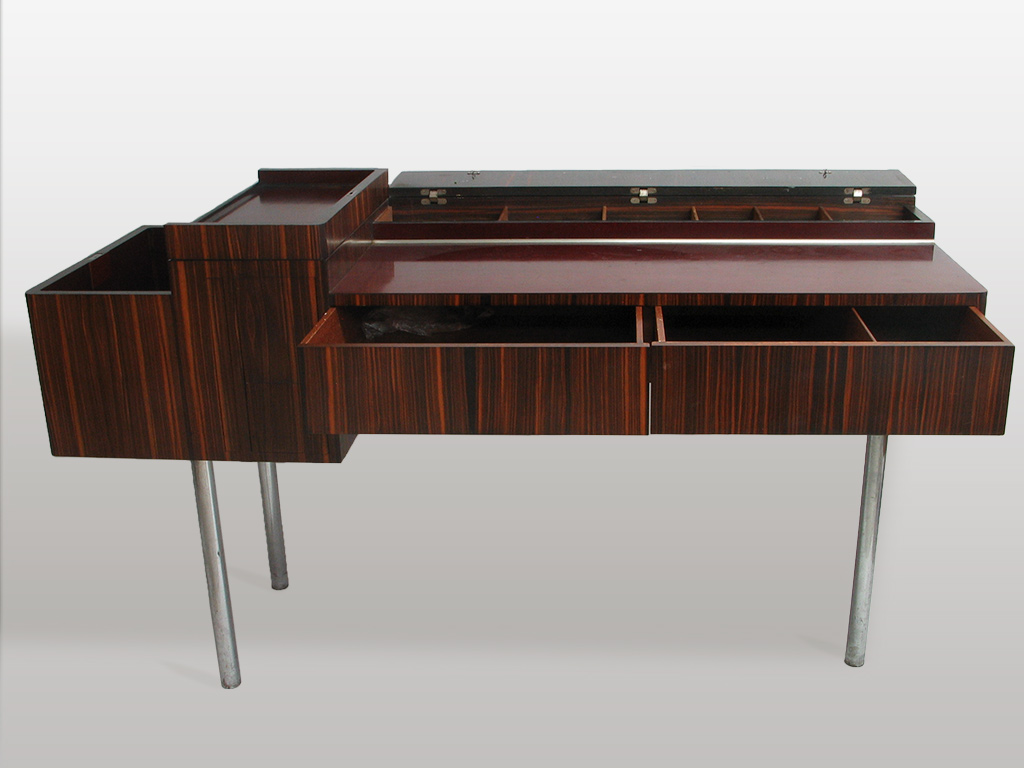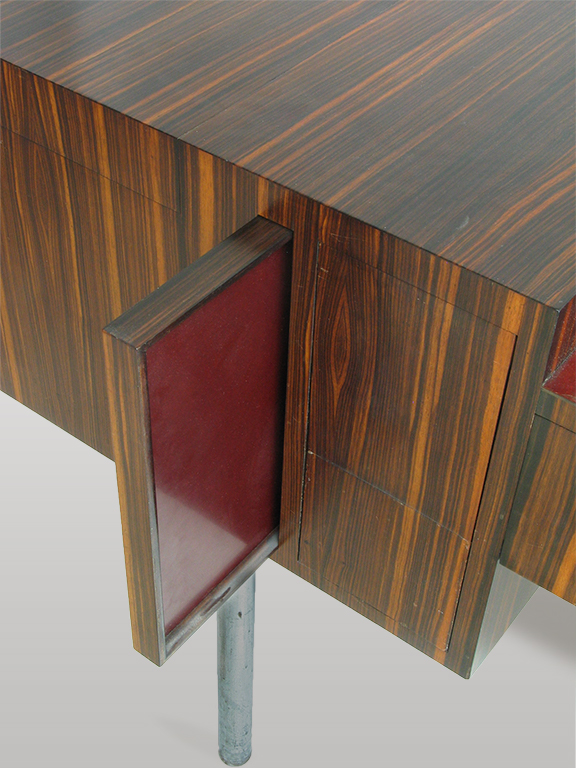Perhaps the greatest conservation challenge associated with 20th century furniture is the panoply of materials – often nontraditional in nature – employed in its construction. Here is an example of an outstanding 20c furniture object that exhibits both normal wear and previous restoration, particularly affecting nontraditional materials incorporated into its construction.
Initial Condition:
Consisting of a liquor cabinet, condiments compartments, ice drawer, regular drawers, pull out serving tray and countertop, this sideboard incorporates three materials first introduced into widespread use in the 20th century: an early dark red plastic, found on the countertop, the interior of the liquor cabinet and on the pull out tray;- chromed steel legs; and aluminum trim bordering the countertop. The construction is also unique because it incorporates both traditional techniques and modern materials. The joinery includes beautifully-crafted examples of both dovetail and mortise and tenon joints. However, the rosewood veneer conceals plywood structural elements.
The plastic countertop presented the most immediate conservation issues. It showed evidence of extensive wear, and was scratched and blanched in several places. In addition, a previous restoration coating had been unevenly applied. This coating had visible brushstrokes and was delaminating in sections. The chromed metal legs were speckled with dark corrosion, scratches and brown accretions. Overall, the sideboard had a matte and lifeless appearance. The interior surfaces, on the other hand, protected from unusual wear and sunlight, were in lustrous and stable condition.
Treatment:
The first step was to remove the rapidly-degrading coating left from a previous restoration. After performing initial solvent testing, we decided to use a specially formulated solvent gel that would remove the coating without affecting the plastic underneath. We suspended the gel over the surface so that only the solvent's vapor would affect the restoration coating, thereby giving us complete control over the removal process. Once the coating swelled, we were able to gently wipe it away, leaving the plastic intact. After that, all that was required was an application of a conservation varnish to restore the original color and luster. The aluminum and chromed steel presented a more typical conservation problem. Normal wear, abrasions and accretions were gently polished away using a slurry composed of a solvent mixed with an exceedingly finely ground naturally-occurring mineral. This restored the luster to these metal surfaces. Finally, the veneered surfaces, which were dull and lifeless, received a coating of a specially prepared wax made of shellac, restoring a high luster, while leaving the original coating intact.
After Treatment:
This sideboard – and a similar piece in the collection of the Museum of Modern Art – are prime examples of early 20c American furniture making, incorporating new materials while retaining vestiges of traditional craft. Conserving an object such as this for present enjoyment and future study was the goal of our efforts as conservators.





